Remember in the film, The Biggest Little Farm, where they spent over $100,000 building this massive worm farm, to produce compost tea to nourish the microbial life in the soil of their trees and vegetables?
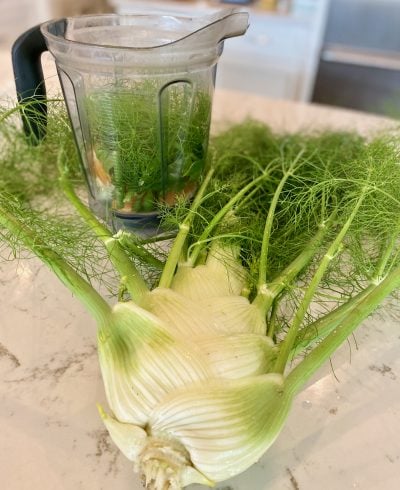
Well, today is a beautiful day – because I’m going to tell you the absolute fastest, easiest, cheapest way to create a beautiful little worm farm – using almost no effort – because when you spread your composted soil out on your fields AND you sprinkle some worms around, the results of the grass growth (speed and density) are 5x better.
You can also bring a bunch of the worms home and add them to your vegetable garden – your veggies will be enormous!
Those of you who’ve been reading this blog, or watching the YouTube vids for a while, know that I am always experimenting. The super efficient, mad scientist in me always wants to know if there’s a faster, easier, cheaper way to do things.
And because deep down, I don’t believe life needs to be quite so hard! I believe that ease comes from working in synergy with nature, energy flows and community.
Easy-peasy worm farm
So let’s get into the easiest worm farm you’ll ever run. Ready? Here are all the instructions:
Take a bunch of horse manure and pile it up in a sunny spot. Leave it alone all winter. Done.
Come spring you will have beautiful healthy worms in every handful. The top and side of the pile may not look composted at all. You may have thick vegetation growing on the pile. It’s all good. Carefully dig underneath and jackpot! Worm party.
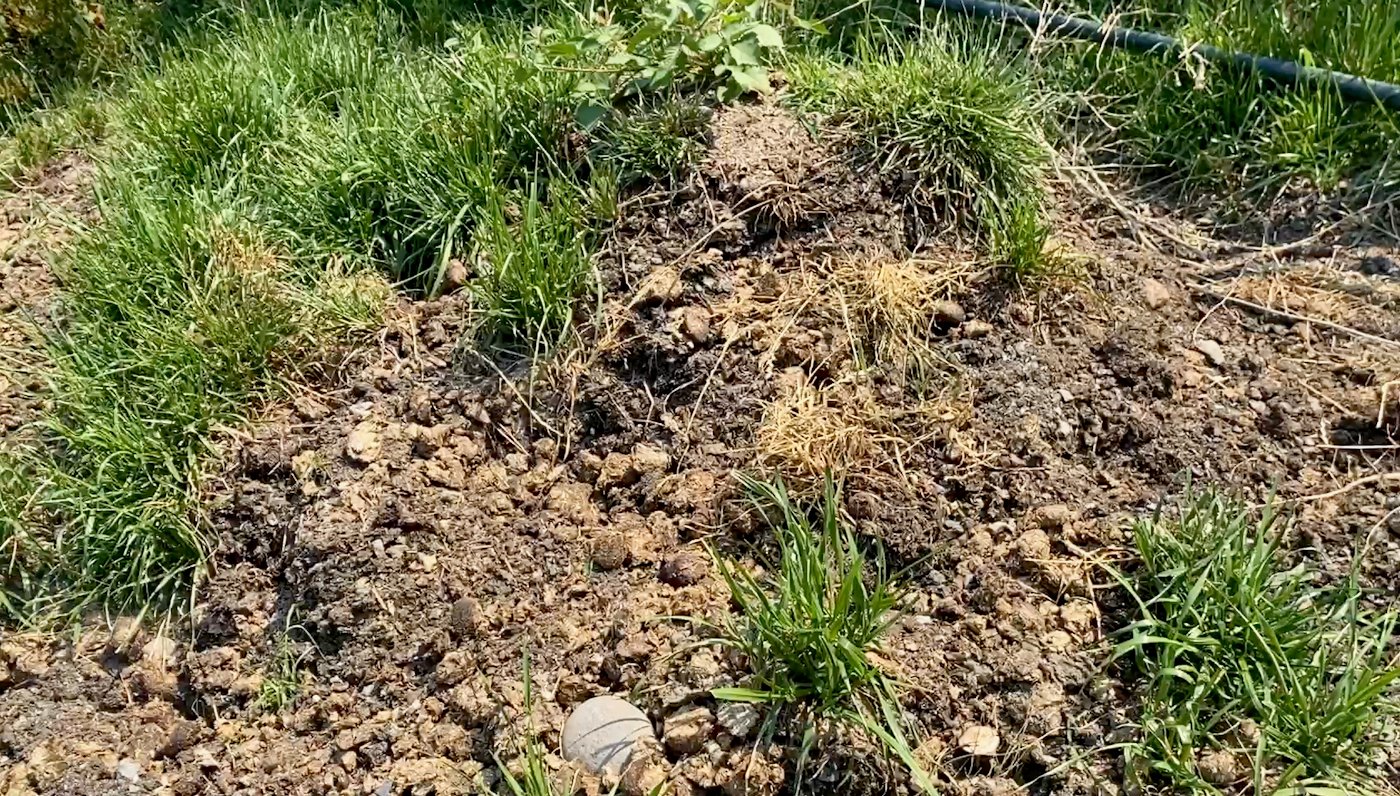
The higher you can make the pile, the better worm proliferation will be. But this is also weather-dependent. If you live in a hot climate, you may need to water your pile to keep it from drying out – and maybe you’ll need to keep adding fresh manure on top.
If you live in a rainy climate, you need to put it in the sunniest spot you have. Here in the Pacific Northwest, I had an open manure pile that started out almost 5 feet tall do really well, as it shrank over the winter down to 2.5 feet tall – great worm production. Then I had a pile – more of a heaped row actually – only 2 feet tall, but in a very sunny spot, that produced excellent worms by the first week of March.
Remember, we’re not creating composted soil here. We’re just creating a worm farm. If you also compost your horse manure, you will automatically have worms in your composted soil. But this method is easier (pile can be much smaller and don’t have to tarp) and we just want the worms to add to our pastures or garden – you can see from the photos that the manure is not fully composted, so not suitable to use as soil.
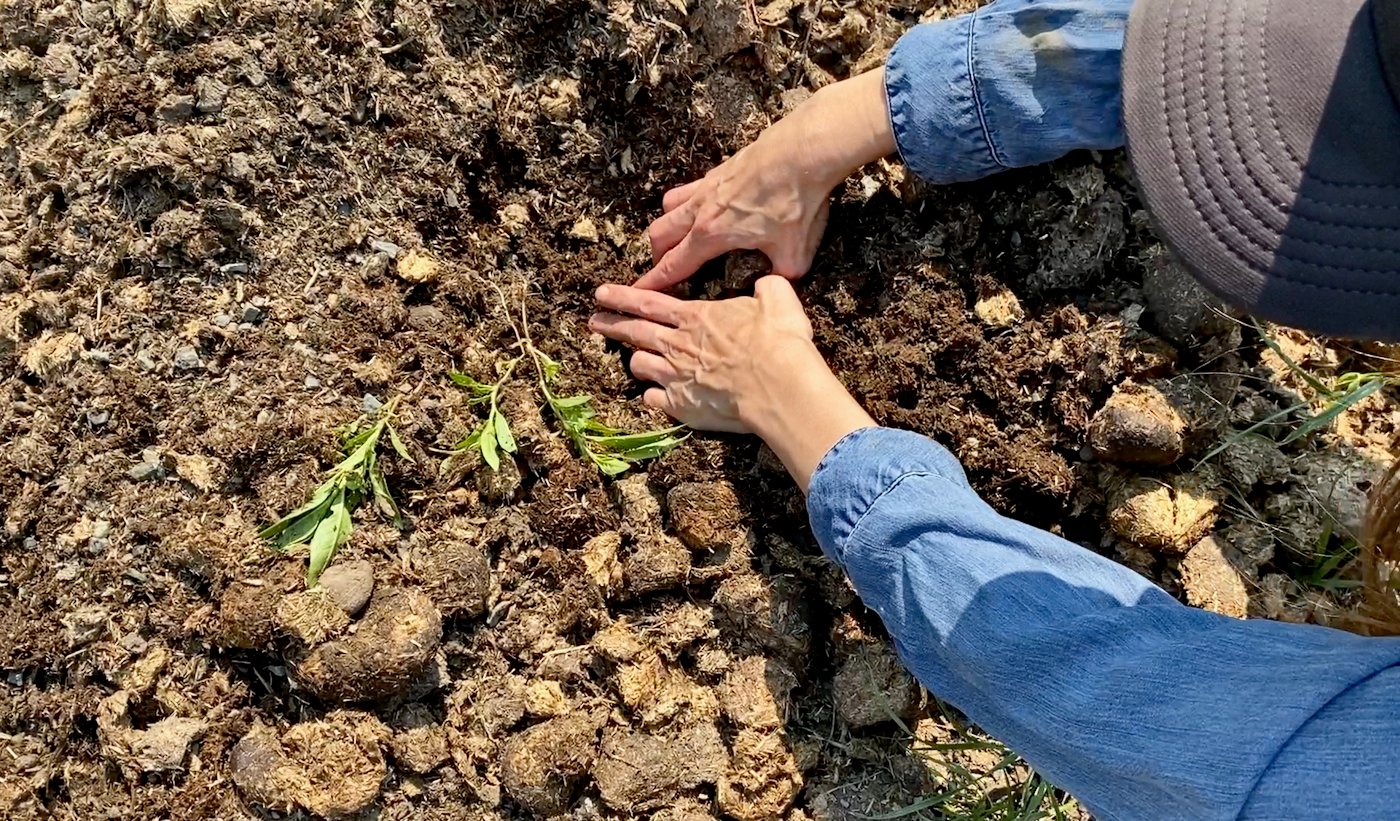
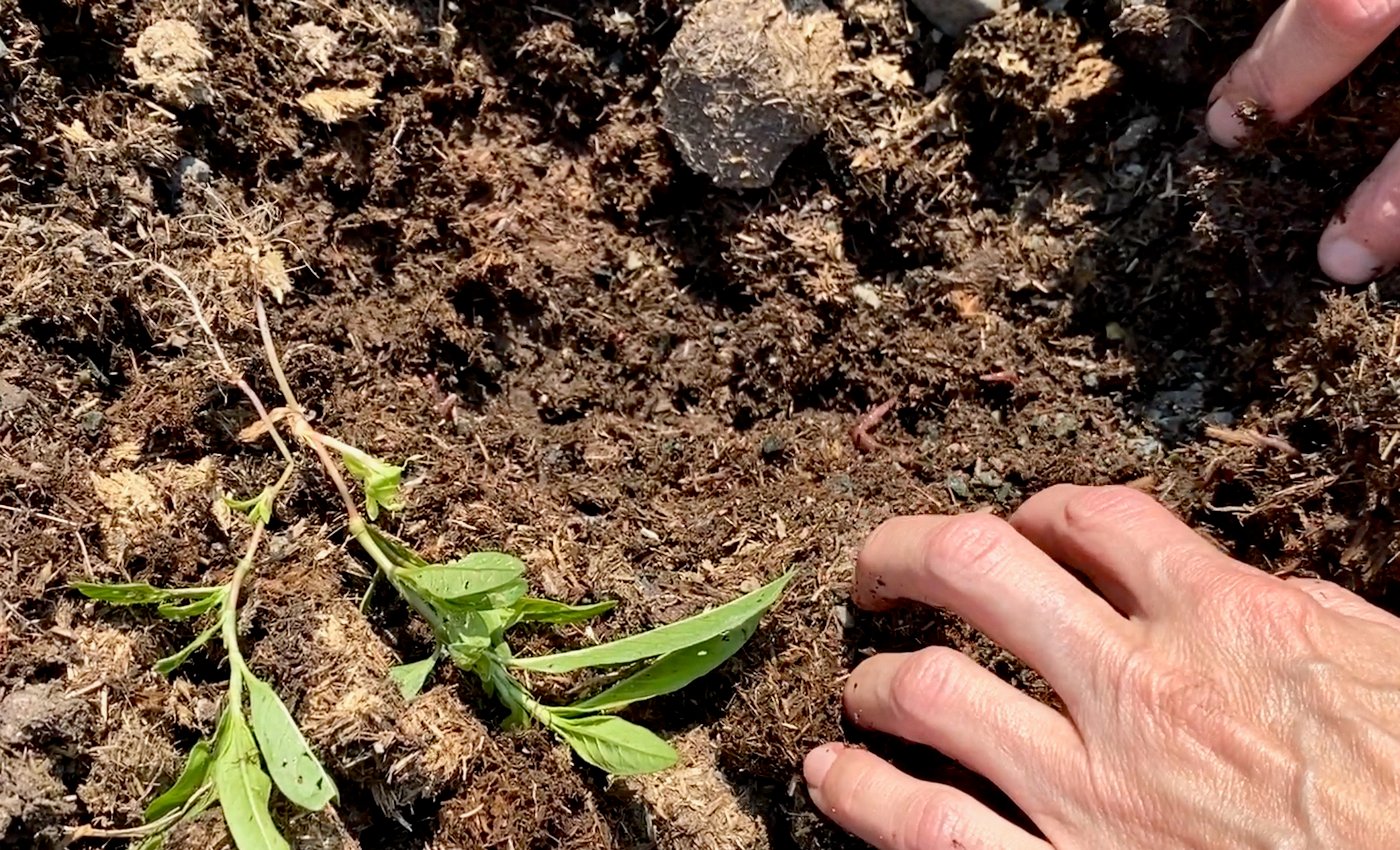
So the best way is just to pile up some manure and get started! Listen to your gut – if you feel you need to add water, do so. Just like when someone is adding milk to your tea and asks you to say, “stop” when they’ve poured enough milk. You FEEL for the stop. Use the same intuition here. If you like, stand in front of the worm pile and do some deep breathing for a few minutes first. Imagine the manure breaking down and little worms working their way through the pile, THEN feel for whether some water would be welcome, or not. And then add the water by feel.
I water my house plants this same way. I tell them to let me know when they want water, and then I water them until I feel STOP. I’ve never had a plant die (or not thrive) and I have no idea when each type of plant is supposed to be watered. I do it all by connecting and feeling. The same way we communicate with our horses.
WHY do you want a worm farm?
Well, I’ve tested regrowing a trashed field in three ways. In each experiment, I seeded at 15 lbs of seed per acre. If you had a completely barren dirt field, then you would likely need 30-40 lbs of seed per acre:
1. Sprinkle forage seed on trashed field and fence off from horses.
2. Fence off field to keep horses off it. Spread composted soil on trashed field, then sprinkle forage seed.
3. Fence off field to keep horses off it. Spread composted soil on trashed field, sprinkle soil with handfuls of worms, then sprinkle forage seed.
Guess which method drastically outperforms the others in terms of speed and density of plant growth? Yep, #3. This method becomes even more crucial if you’re rehabbing a dried out, barren section, where the soil is extremely hard and nothing is growing. Without ‘weeds’ and their strong roots to break up compacted soil, the worms can get the job done instead.
If you’re in a very hot, sunny climate, then make sure you provide enough composted soil for the worms to live in (without drying out/dying) while they go to work digesting your compacted ground. In our Pacific Northwest (same as UK and Ireland) climate, even just a quarter inch layer of composted soil was enough.
I use a forage seed blend for horses and sheep which contains Bronson tall fescue, alma timothy, creeping red fescue, perennial ryegrass, orchard grass, meadow fescue, annual ryegrass, and Kentucky bluegrass. This works well for our climate and I can buy a bag at the local feedstore.
Will this work with other animal’s manure?
Kesia (who also has cows, chickens and pigs) and I were discussing this very question. And she figured that horse poop has far more undigested matter in it, than cow poop, so there is plenty for the worms to eat. And the more worms you have, the faster the manure is turned into composted soil. Due to that very same reason (horse poop is not as thoroughly digested as a double-stomach cow) horse manure can often contain seeds, which contributes to re-seeding with native forage, when you spread the compost back out on your field. You don’t have to worry about weed seeds, because the only seeds in the manure will be the plants horses eat!
Kesia also studied with Reginaldo Haslett-Marroquin who developed a system for Tree-Range Chicken production which is just brilliant. He uses a process for his chicken manure called cold composting. In the Fall, he spreads the old chicken coop bedding (which contains lots of chicken poop) where he will plant his garden the next year, and layers it with plain wood chips to balance out the nitrogen. Over the fall/winter the chicken manure breaks down in a fungal process, like forests do. So the composting is not done by bacteria or worms, it’s done by fungus, which proliferates under these conditions. The fungi colonize quickly and erode quickly, without losing organic matter in the process. Et voila! Ideal garden soil. He then plants directly into that the following spring.
It’s amazing how abundant life can get when we start working with the wee critters in our soil and poop!

Jini Patel Thompson is a natural health writer and Lazer Tapping instructor. She began riding at age 2 in Kenya, and got her first horse at age 8 in Alberta, and so continues a life-long journey and love affair with these amazing creatures.

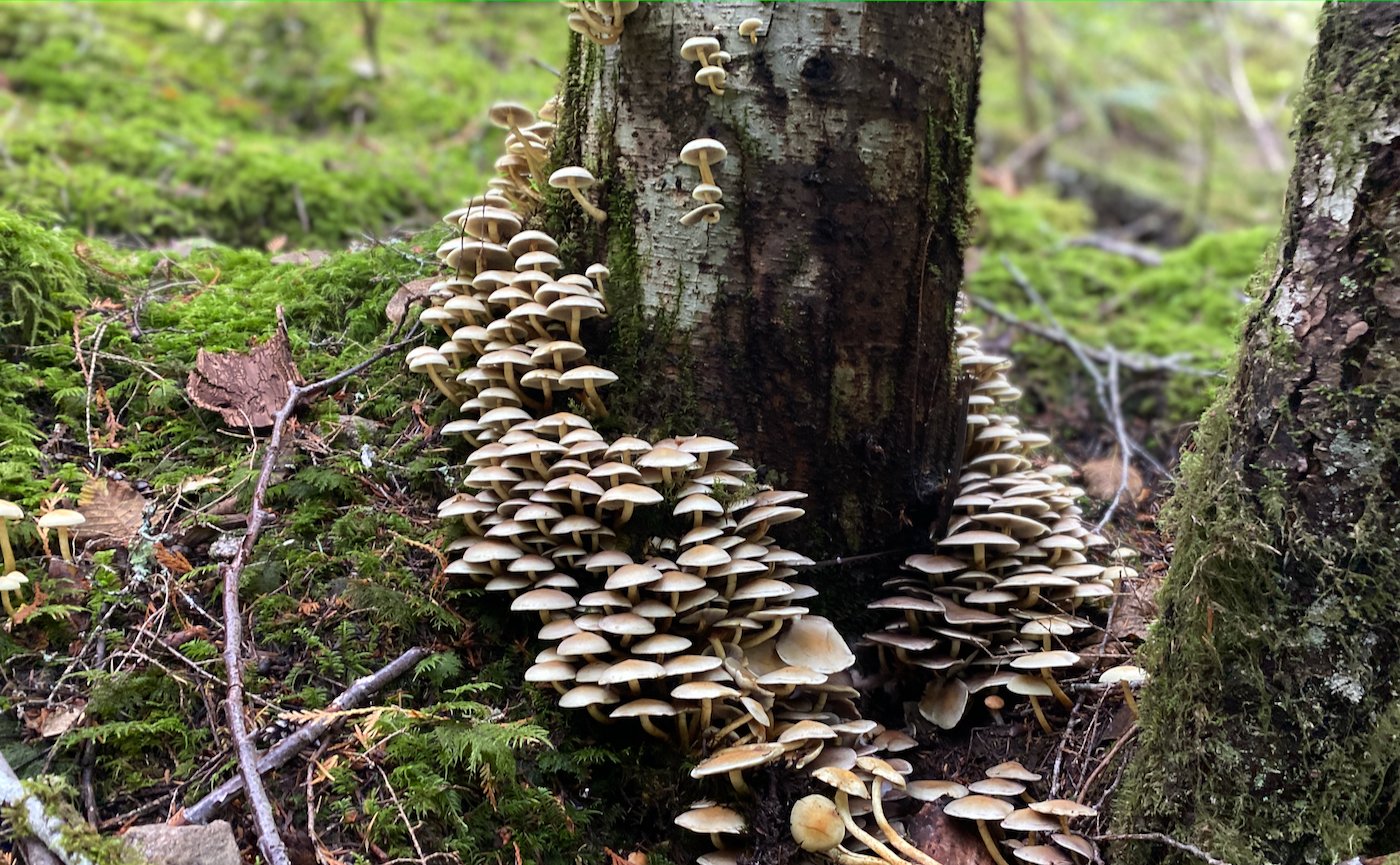







This is all so great! I enjoy how you help the idea of working with Mother Nature and not against her! She is my higher power! This is basically what the horses told me to do around the Oak trees! Now I am curious if there are worms below the first few layers of poop? I will be checking that today? I definitely need some worms in the green house because although the bottom 4-5 inches is horse poop and sticks and leaves the top is a sand/soil mix that seems to harden and not be very plant/veg/fruit friendly! I will let you know what I find? If there are lots of worms I will transplant them to the greenhouse. We have been burring all the kitchen scraps in various places in the greenhouse so hoping that helps too! This has been an extra dry year and it’s looking like it’s going to be extra hot too as we have already seen a day with a 90degree temp 🥵
✌🏼💚🐴